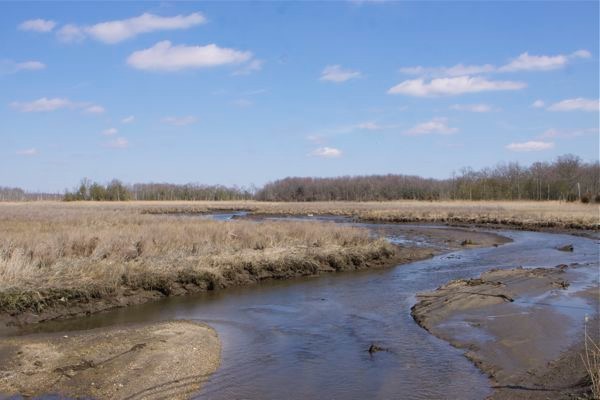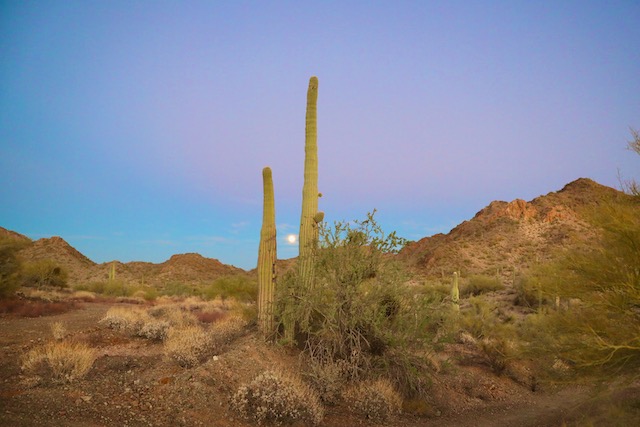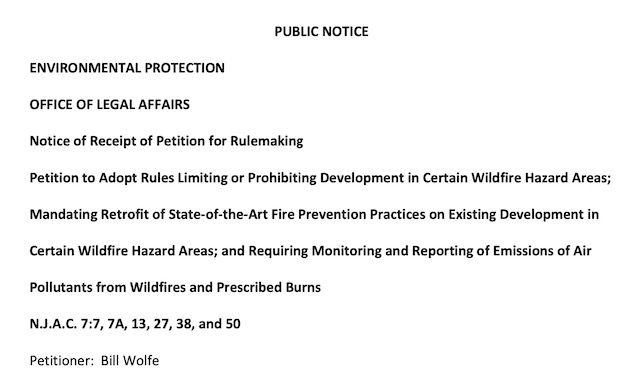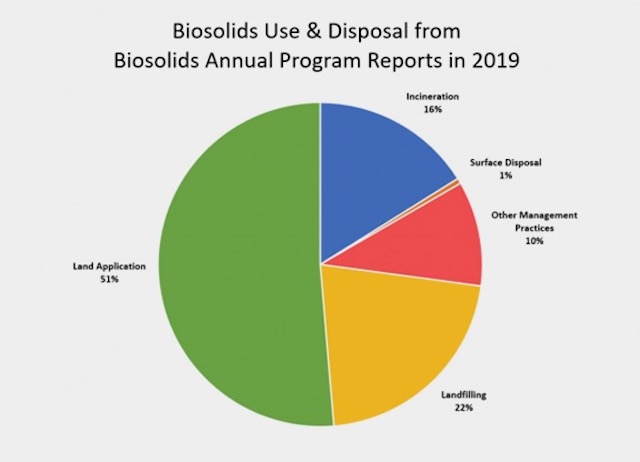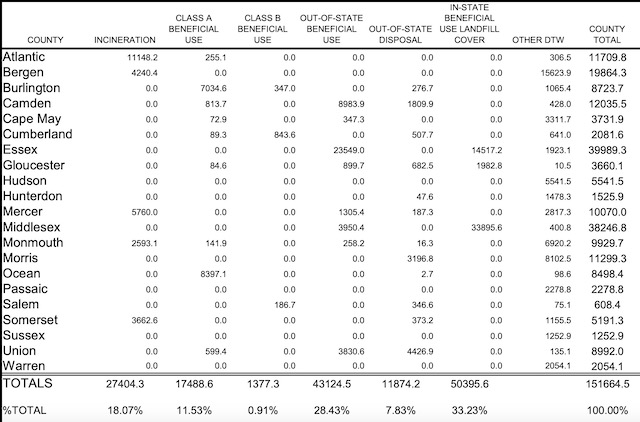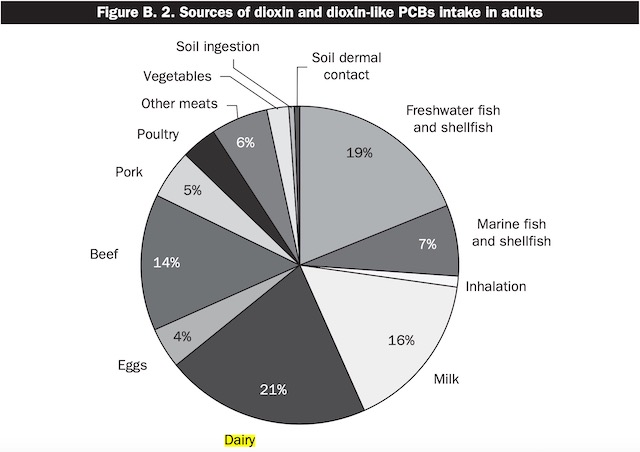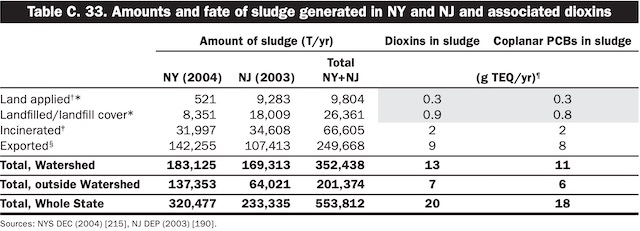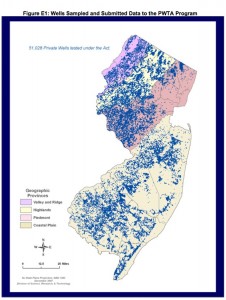Murphy DEP Allows PSE&G To Destroy 150 Acres Of Coastal Wetlands, With No Enforcement, Mitigation, Or Compensation Requirements
PSE&G Nuclear Power Plant Operations Destroyed 150 Acres of Coastal Wetlands
DEP Now Proposes To Remap And Deregulate These Wetlands
DEP Fails To Consider Climate Change Driven Sea Level Rise, Storm Surge, Or Increased Storm Intensity
Compounding DEP’s corruption, I’m giving big odds that NJ’s environmental groups and owned media like NJ Spotlight – who receive generous support and grant funding from PSE&G – will not make a sound.
It is bad enough that PSE&G nuclear plants have received over $1 billion in public subsidies and will continue to receive another $300 million per year until 2050.
It is bad enough that the DEP waived cooling tower regulatory requirements for those nuclear plants, allowing them to slaughter billions of aquatic organisms, saving PSE&G hundreds of millions of dollars.
And it is bad enough that PSE&G has received millions of dollars in subsidies, below market lease contracts, and regulatory concessions (and will receive even more) to construct the wind manufacturing port at the nuclear plant site (aptly named “Artificial Island”).
[Update: 4/8/22 – I left this subsidy out – NJ Spotlight cheerleads today:
The port, costing a projected $300-400 million in public funds,
Meanwhile, nearby Salem City continues to be neglected – take a look at downtown. ~~~end update]
But now, the Murphy DEP has opened a completely new front on the subsidy and deregulation horizon. (Could cases like this be why DEP Commissioner LaTourette has centralized and consolidated power over DEP enforcement?)
We warned that back in October, the Murphy DEP approved a petition for rulemaking filed by PSE&G to deregulate 150 acres of coastal wetlands, see:
Today, DEP proposed regulations to formally remap and thereby deregulate those wetlands. (read the DEP proposal, now open for public comment).
This is one of the largest destructions of wetlands in DEP’s history, since the 1970 passage of the coastal wetlands laws.
DEP is not only allowing this destruction to occur, but is actually facilitating it by deregulation and no enforcement and providing cover by hiding behind “green energy” wind promotion.
Despite the fact that PSE&G historically destroyed regulated coastal wetlands, DEP is taking no enforcement action and its not requiring that 150 acres of destroyed wetlands be replaced via mitigation and/or compensation requirements.
DEP’s own proposal makes those points clear – as well as openly states that DEP did not consider the impacts of climate change at the site. For those that like to dwell in the weeds, here are relevant supporting excerpts from the DEP proposal:
1) PSE&G Destroyed Coastal Wetlands
PSE&G filed a petition to DEP that requested that DEP remap and thereby deregulate approximately 150 acres of coastal wetlands. The PSE&G petition made that request on the basis that: (emphasis mine)
The Petitioner contends in the petition it filed that Coastal Wetland Maps 224-1752, 224- 1758, 231-1752, 231-1758, and 238-1752 do not reflect the current property conditions due to the presence, as described above, of sand, dredged material, gravel, asphalt, parking areas, berms, and elevated topography that precludes tidal inflow and, consequently, the area in question does not meet the definition of a coastal wetland under the Act.
DEP’s proposal makes it very clear that the activities of PSE&G were responsible for destroying some of those wetlands – a US Army Corps of Engineers dredge disposal site destroyed some as well – such that they no longer meet the definition of coastal wetland: (CDF means “confined disposal facility”)
Area 2 – Block 26, Lot 4 contains the PSE&G Nuclear CDF, which is used for management of maintenance dredged material and desilting of water intake structures and the cooling tower basin. The area was initially used for construction staging and lay-down during construction of the Salem and Hope Creek Generating Station (the Station) and has been continuously used and managed to support the Station. This area also includes the PSE&G Nuclear Security Training Center and target range …. Hydrologic characteristics are limited by the perimeter berms. Soils are highly disturbed and characterized by the historic placement of fill during the original construction of Artificial Island and the construction of the generating stations. Vegetation is dominated by invasive phragmites, due to the disturbed nature of the area.
Area 3 – Block 26, Lot 5 contains an existing PSE&G Nuclear laydown/emergency preparation area, existing employee parking areas, chill water plant, and a maintained 500kV transmission right-of-way and maintained buffer. The area consists of existing developed areas including soil/gravel laydown, asphalt parking asphalt roadways
These are the kind of findings of facts one often reads in DEP enforcement documents that impose huge enforcement fines and mandate wetlands restoration and compensation for destruction of public trust resources.
There appear to be no prior DEP permits issued for this massive wetlands destruction and there were no DEP mitigation or compensation requirements to offset this massive destruction, historically. DEP rules flat out prohibit that:
7:7-2.1 When a permit is required
(a) No person shall engage in a regulated activity subject to this chapter without a coastal permit. Initiation of a regulated activity without a coastal permit is considered a violation of this chapter and shall subject the person or persons responsible for the regulated activity to enforcement action in accordance with N.J.A.C. 7:7-29.
DEP rules also warn about destroying wetlands without DEP prior review:
7:7-2.5 Obtaining an applicability determination
(a) A person may request a written applicability determination from the Department to determine the applicability of CAFRA, the Wetlands Act of 1970 (N.J.S.A. 13:9A-1 et seq.), and/or the Waterfront Development Law (N.J.S.A. 12:5-3 et seq.) to a proposed project. An applicability determination is optional, but the Department encourages persons to request one if there is uncertainty about whether a particular activity is regulated, since conducting unauthorized activities may result in enforcement action.
Here are DEP enforcement regulations that would apply to such egregious violations:
7:7-29.5 Civil administrative penalties for failure to obtain a permit prior to conducting regulated activities
(a) For the failure to obtain a permit prior to conducting regulated activities, the Department may assess a civil administrative penalty pursuant to this section of not more than $25,000 for each violation of N.J.A.C. 7:7-2.2, 2.3, or 2.4.
7:7-29.6 Civil administrative penalties for violations other than failure to obtain a permit prior to conducting regulated activities
(a) For violations other than failure to obtain a permit prior to conducting regulated activities, the Department may, in its discretion, assess a civil administrative penalty pursuant to this section of not more than $25,000 for each violation of N.J.S.A. 13:19-1 et seq., N.J.S.A. 12:5-1 et seq., and/or N.J.S.A. 13:9A-1 et seq., or any regulation, rule, permit, condition, or order adopted or issued by the Department pursuant thereto.
The seriousness of the violation in terms of triggering enforcement sanctions is defined by the area of wetlands destroyed. The maximum area, triggering the most severe penalties, is 200,000 square feet (less than 5 acres). (see page 475 of DEP rules)
This case involves 150 acres of wetlands destruction!
Do the math: $25,000 per day, for a period of almost 50 years!
Instead of enforcement, DEP finds that this massive destruction of wetlands has had “no environmental impact” – they do that by sleight of hand with respect to the environmental impact of the DEP’s “map amendments” instead of the actual destruction of the wetlands that resulted in them no longer meeting the legal definition of wetlands:
Because the areas to be remapped as uplands do not meet the definition of a coastal wetland under the Act, the map amendments will have no environmental impact.
This is remarkably cynical.
Under law and DEP regulations, any corporations that destroyed, hydrologically altered, or filled 150 acres of wetlands such that they no longer functioned like or met the definition of wetlands would face severe DEP enforcement sanctions.
DEP regulations include restoration requirements: (@ page 481)
- Recovery of compensatory damages for any loss or destruction of natural resources, including, but not limited to, wildlife, fish, aquatic life, habitat, plants, or historic or archeological resources, and for any other actual damages caused by any violation for which a civil action has been commenced and brought under this subsection; and/or
- Execution of an order requiring the violator to restore the site of the violation to the maximum extent practicable and feasible or, in the event that restoration of the site of the violation is not practicable or feasible, provide for an off-site restoration alternative as approved by the Department.
How much per acre are credits going for at the DEP Wetlands Mitigation Bank?:
A mitigation bank is a site in which wetlands, uplands, riparian zones, and/or other aquatic resources are restored, created, enhanced, or preserved by a mitigation bank operator in advance of any specific need for compensatory mitigation.
DEP’s failure to require mitigation or compensation for the loss of 150 acres of wetlands is another PSE&G multi-million dollar subsidy.
2) DEP Did Not Take Enforcement Action Or Require Mitigation Or Compensation
Despite PSE&G’s open admission of massive destruction of wetlands in the petition they filed, DEP is not taking enforcement action or issuing enforcement fines and penalties.
DEP is not mandating restoration of destroyed and damaged wetlands.
DEP is not mandating compensation for lost use of publicly owned natural resources held in trust by DEP.
DEP is doing no of that. What DEP is doing is deregulating these wetlands by remapping them as no longer wetlands!:
The Department has determined that the existence of historic longstanding fill, sand, dredged material gravel, elevated topography, and berms preclude tidal inflows. Thus, the Department is proposing to amend Coastal Wetlands Maps 224-1758, 231-1752, and 231-1758.
3) DEP Did Not Consider Climate Change Driven Sea Level Rise, Storm Surge, Storm Intensity, or Flooding
A key criteria for triggering the presence of coastal wetlands is hydrology and the elevation of those wetlands.
Here’s how DEP considered the hydrology and elevation issues:
The Act’s definition of a coastal wetland specifically refers to areas whose surface is at or below an elevation of one foot above local extreme high water. The term “local extreme high water” is not defined by the Act. Thus, in applying the Act, the Department equates “local extreme high water” to “extreme high-water spring,” which is the highest excursion of the spring tides or “mean higher high water,” which is the average height of the highest tide. As a conservative measure, the Department utilized the higher of these two excursions in applying the Act.
To evaluate current site conditions, on December 28, 2020, Department staff conducted a site inspection. The Department scheduled the inspection date and time to coincide with a full moon high tide event to evaluate “local extreme high-water” conditions
Note that DEP ignores climate science – i.e. sea level rise, storm surge, increasingly intense storms, and increased Delaware River flooding – is determining “local extreme high water”.
A spring “full moon high tide” is NOT the equivalent of “local extreme high-water” conditions, which are influenced by climate driven sea level rise, storm surge, more intense storms and increased Delaware River flooding.
In a transparent and egregiously hypocritical move, DEP does recognize the impacts of climate change, but does so in the “Social Impact” section and to promote their deregulation of wetlands!
the area is the site of a planned wind power port and construction of the wind power port will be possible in these areas because the mapping will now be accurate. This will create construction and permanent operating jobs. In addition, the anticipated wind power port will reduce reliance on fossil fuels and increase use of sustainable wind energy, thus reducing greenhouse gas emissions. While these impacts were not part of the Department’s analysis of the requested amendment of coastal wetland boundaries, the anticipated benefits of the wind power port will assist in the State’s efforts to address climate change and support the clean energy goals outlined in Governor Murphy’s Energy Master Plan, the Global Warming Response Act (GWRA), N.J.S.A. 26:2C-37 et seq., the Global Warming Response Act 80×50 Report (80×50 Report), prepared in accordance with the GWRA, and the interim emissions target set forth in Governor Murphy’s Executive Order No. 274 (2021) (EO 274). As indicated in EO 274, the environmental impacts caused by climate change include rising sea levels, increased flooding, more frequent and severe extreme weather events, and numerous other adverse environmental impacts. The Sixth Assessment Report from the Intergovernmental Panel on Climate Change (IPCC) contains the strongest call to action to enact sustainable solutions such as Offshore Wind to reduce our greenhouse gas emissions.
I really can’t see how DEP could be more corrupt or more transparent in their corruption.
Compounding DEP’s corruption, I’m giving big odds that NJ’s environmental groups and owned media like NJ Spotlight – who receive generous support and grant funding from PSE&G – will not make a sound.
